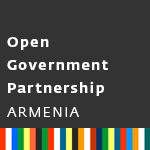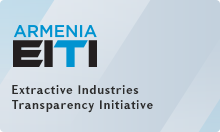Tuesday, 8 July 2008
RA Prime Minister Tigran Sargsyan called a consultative meeting to discuss motor-transport fare-related questions. The meeting was attended by the Vice-Prime Minister, Minister of Territorial Administration of the Republic of Armenia, the ministers of transport and communications, finance, economy, the Mayor of Yerevan, the head of public services regulatory commission, the chairman of the State commission on protection of economic competition, representatives of road carriers operating in Yerevan and the executive director of Samasu expert company. To start with, the Prime Minister presented the meeting agenda which bore on organizational efficiency and service quality, conditional on the level of applicable fees. The Prime Minister stated in part: "I wonder whether the rates applicable in this area are justified and provide for reasonable profit margin for our operators or the complaints voiced by even successful bidders about the inadequate level of transport fare are well-grounded and need reconsidering. We have already held one such consultation in order to get familiarized with the current state of affaires. Also, we have the findings of those institutes entrusted with the task of conducting bus and taxi market studies. If we are to set a strategy focus of minimizing the share of minibus services in downtown Yerevan, we will have to view the problem from a competitiveness standpoint as it is a well known fact that traffic volume has a direct impact on the cost-price level. For instance, if we augment the number of applicable bus services, susceptible to lead to an increase in traffic, this will affect the cost-price and, therefore, there will be no need in reconsidering the existing rates. But if we proceed from what we have today and embrace the strategy of raising the bus fare itself, we will run the risk of losing in competitiveness as citizens will come to prefer taking cheaper means of transport. As a result, we will fail to resolve the problem at hand. According to experts, traffic level is the key factor affecting the fares. Cost-price goes down sharply with increased traffic. On the one hand, we are in need of reconsidering the prices in order to increase operating gains while, on the other hand, we will lose part of passenger flow in this way. In the end, they will not be profitable, for as stated above, our passengers will opt for more cost-effective means of transportation. After all, the problem proves to be a twofold one. This very factor was behind our decision to hold an open debate like this so as all operators and stakeholders could be provided a forum resulting in such a well-meditated strategy as might be clear and advantageous first of all to eventual investors. The policy line to embrace is crucial in this respect. Therefore, if we make it clear that we are going to prefer bus services to minibus-borne traffic for the next 5 years and that downtown traffic must be eased in line with traffic regulations applicable in other cities with organized transport system, we will do so in an effort to provide our citizens with more convenient services."
Following the Prime Minister's remarks, all those in attendance were given the possibility of expressing their views which only differed as to the statement of the levels of passenger flow. The speakers presented their findings concerning both minibuses and BOGDAN and PAZ buses. All the other pricing factors in the report as calculated on the basis of globally applicable methodologies were said to be fully substantiated. In order to avoid eventual controversy about passenger traffic levels and address the problem in a coordinated manner, the Prime Minister ordered to carry out measuring of per-hour passenger flow within a week's time, account taken of the seasonal index. A final decision will be taken pending the completion of the proposed joint survey. The proposal was accepted by all meeting participants.






